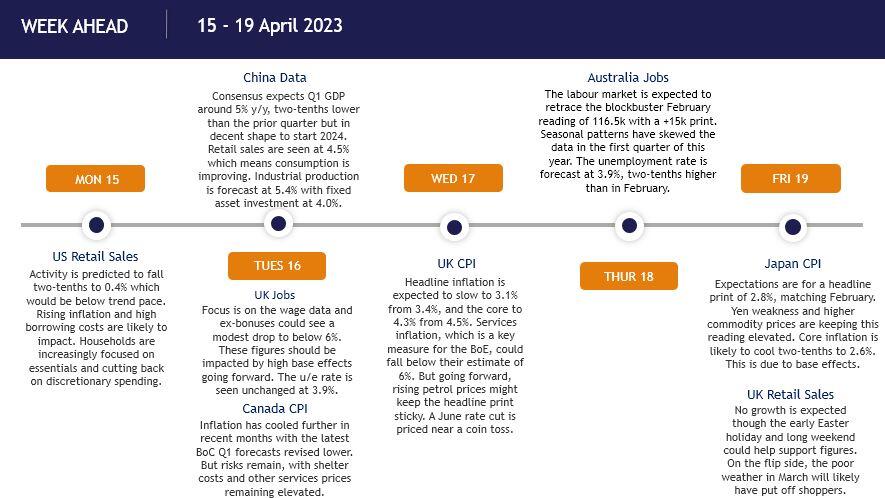Markets have been shaken up by a surprisingly strong US CPI report and rising tension in the Middle East. Might the “higher for longer” rates theme now turn into “higher forever”? This needs to be caveated by the fact that this narrative might only be a US phenomenon, as “divergence” now also becomes a buzzword for markets. Central banks may veer off on their own policy paths as inflation varies between regions. But with 2024 Fed rate cut bets crushed, from over 150bps to around 50bps now, it’s no wonder king dollar is reigning and this could continue for some time.
The greenback has enjoyed its best week since September 2022 with the euro and pound falling to their weakest levels against the buck since November. Geopolitical angst and a flight to safety on an Israel / Iran conflict, together with a happily divergent ECB means this theme has legs. But sustained USD strength could cause problems for those central banks looking to cut rates without undermining their currencies and importing more inflation.
Rising commodity prices need to be added to this mix too, with gold’s seventh week in eight really showing blow-off type price action now. Investors are seemingly more worried about reaccelerating US inflation than funding costs, but we would expect a retracement once the Middle East risks calm. Stocks have turned lower too with the focus turning to earnings driving expectations now due to the elevated equity valuations in US stocks, especially in tech. Watch out for more investment banks reporting, plus Netflix and TSMC in the latter part of the week.
Regarding the economic calendar, we get a bunch of inflation reports from Canada, New Zealand, the UK, and Japan. The latter will be interesting following the change in BoJ policy lately, so too Canada data though for dovish reasons. The UK also releases important CPI and wage growth figures. These will be a key determinant for the Bank of England with a June rate cut priced near a coin toss.
Here are the major economic calendar releases:

